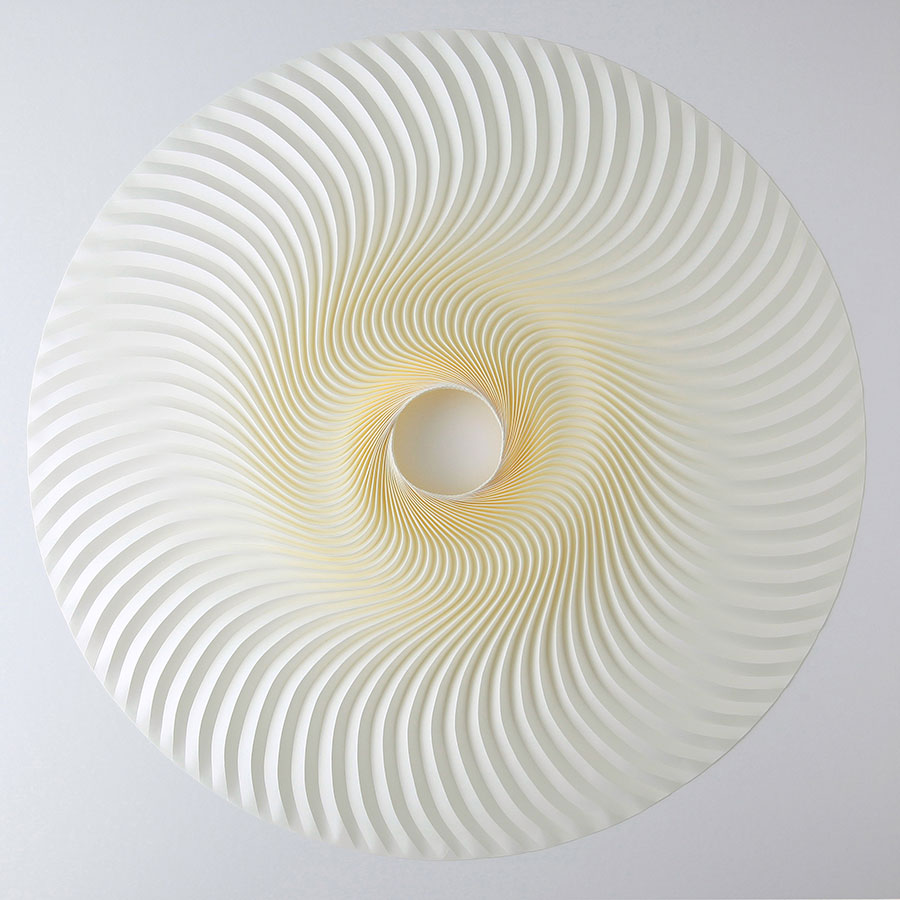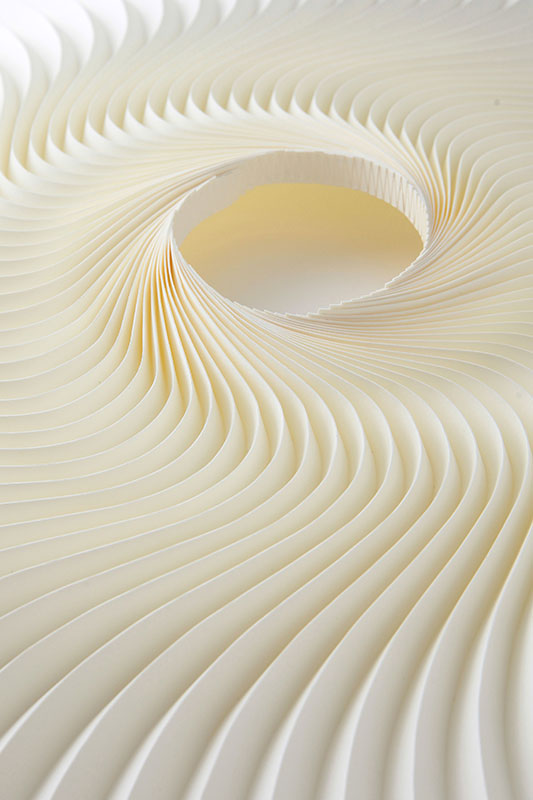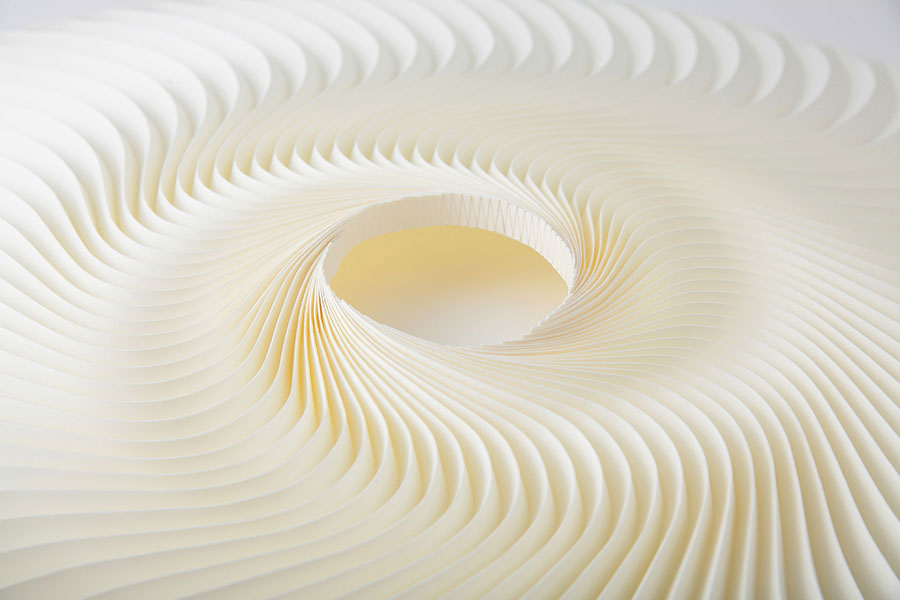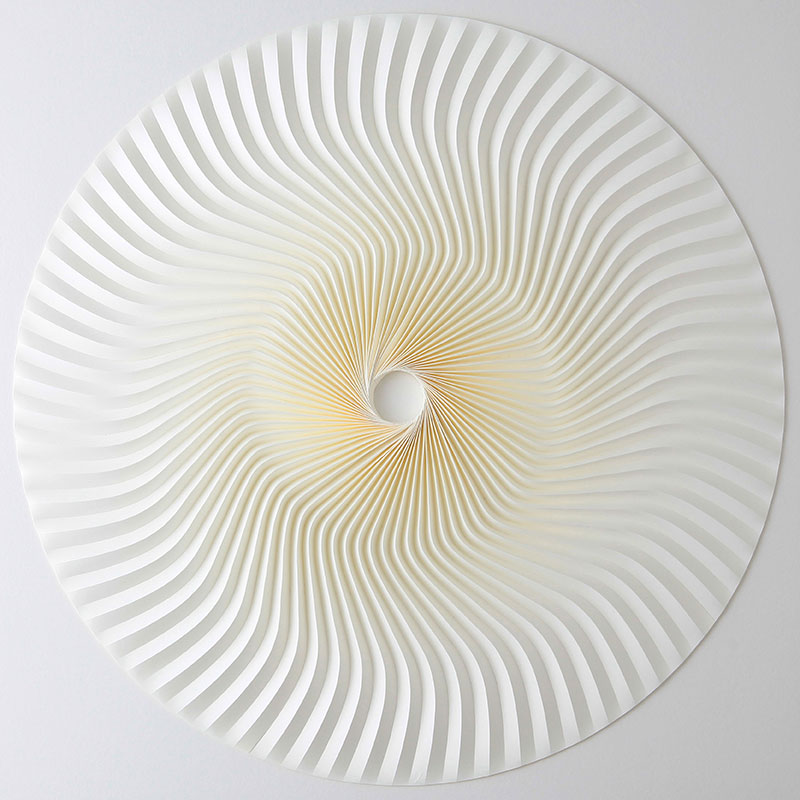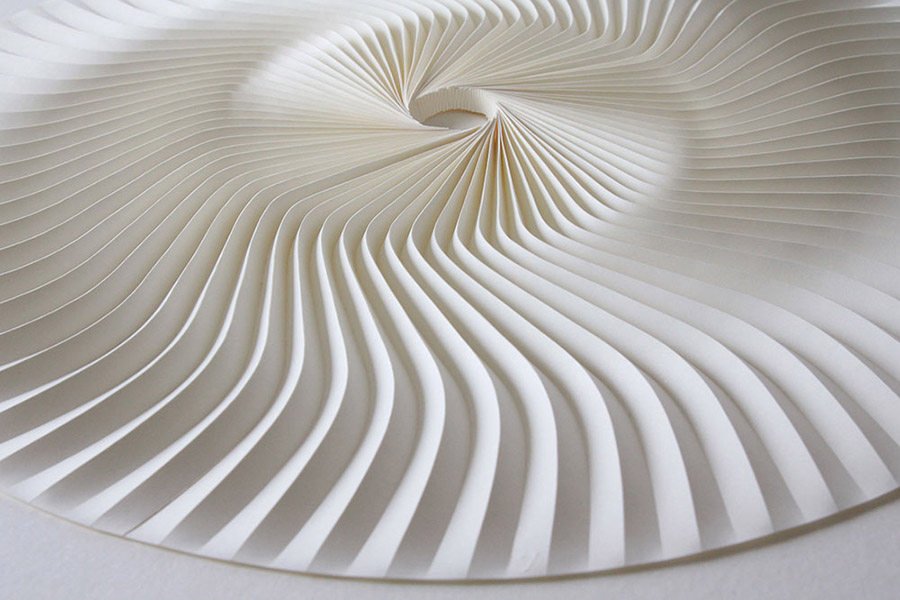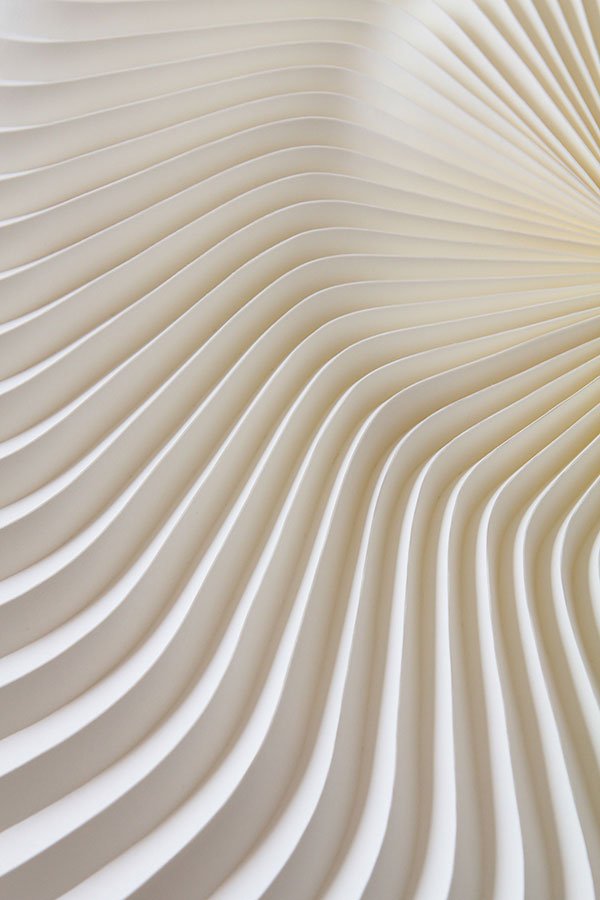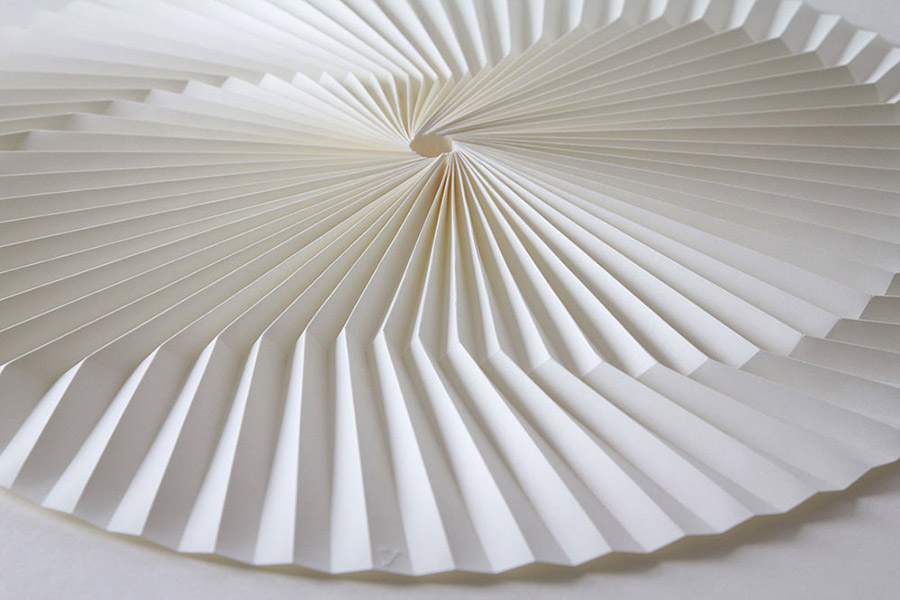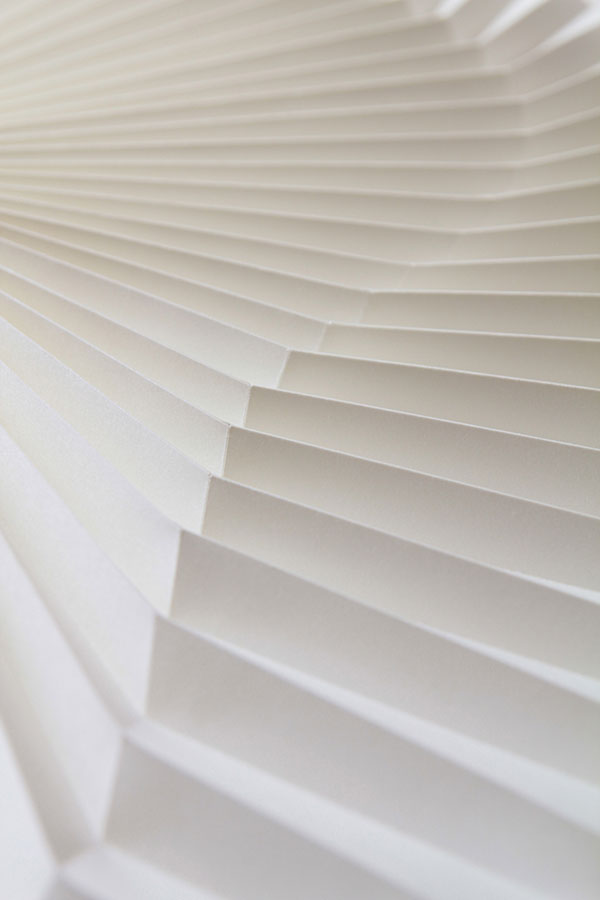Folded Light, Folded Shadow
Introduction by Keiko Fukai
Using her skilled fingers as her tools, Japanese artist NISHIMURA Yuko transforms large, crisp, single white sheets of a special handmade paper known as kyokushi into complex geometric two and three dimensional conceptual wall reliefs.
The repetitive accordion patterns created by the ‘mountain folds’ and ‘valley folds’ combine the elements of light and shadow, producing magical overall surface designs; this is the central concept of all of her work. In recent years the use of paper as a material for fine art has grown popular among artists throughout the world. Nishimura, however, has focused on the technique of folding paper because the simple act of folding is deeply embedded in Japanese daily life.
Certain types of folding have very special significance in Japan and relate to happiness or the desire for good fortune, such as beautifully folded paper money envelopes, shide (the zigzag-shaped paper streamers often used to adorn Shinto related objects), and the famous folded paper cranes. NSHIMURA also points out that the Japanese words 折 (fold) and祈 (pray) and the words 誓 (pledge) and 哲(philosopher) all embed the character for 折 (fold). There is a no clear evidence that there is a connection between folding and praying, but it is difficult to think this is a mere coincidence. After realizing this, NISHIMURA says that she has begun to think deeply about the significance of folding in Japan.
Not only has Nishimura transformed the simple act of paper folding into a distinctive, unique art form, but she also has asked us to consider the deeper cultural meaning of folding.
NISHIIMURA’S works have attracted the attention of wide-ranging media, museums, collectors and architects. In addition to a solo exhibition at the Fuller Craft Museum in Massachusetts and a group exhibition in Art Tower Mito organized by Hanae Mori and the Meguro Museum of Art in Tokyo, her work can be found in many collections such as the Museum of Fine Arts in Boston, the Ritz-Carlton Hotel, Kyoto, the Sheraton Hotel, China and the Palace Hotel, Tokyo.
Creating three-dimensional concrete forms by folding one piece of paper is traditional Japanese origami, and I use this essential ‘folding’ technique in my work. However I create large scale paper relief sculptures composed of narrow pleats that are made by repetitive creasing and folding, which result in accordion folds. Consequently my pieces are both two-dimensional and three-dimensional in form. These basic accordion patterns are altered by introducing different curves to each fold which change the angles of the patterns and by changing the lengths of the basic folds. These changes produce patterns that become very complex and that create a very different overall surface design. The effect created by the shapes of the ‘mountain-folds’ and ‘valley-folds’ represent, for me, the boundaries between light and shadow in the universe – my own form of chiaroscuro – which I am obsessed to express.
I am very particular about using white paper because white washi, traditional Japanese hand made paper, has special significance for Japanese people. For example, one piece of kaishi (small folded squares of washi used by guests in the tea ceremony) placed on the tatami mat floor is an immaculate space for placing sweets for the guests. I want to invoke this sense of the distinctive purity of white paper that is so much a part of Japanese culture.
Japanese people perform the act of folding unconsciously in daily life because it is a practical form of ‘compacting’- such as in folding screens, folded kimomos, beautifully folded money holders, shide (folded zigzag-shaped paper streamers often used to adorn Shinto-related objects), the famous origami paper cranes, etc. In Japan many of these folding traditions derive from someone’s happiness or the hope for good fortune. I have also realized that the similarity between the Japanese words 折 (fold), and 祈 (pray), and the words 誓 (pledge) and 哲 (philosopher) all embed the character 折 (fold). There is a no clear evidence that there is a connection between folding and praying, but it is hard to assume that this is a mere coincidence. After realizing these connections, I think that folding is not only a practical act, but is also related to praying.
Because I believe that these ordinary practices and forms that have been handed down through the centuries have deeper and hidden meanings, I like to think that my work represents a synthesis of our culture and our art.

